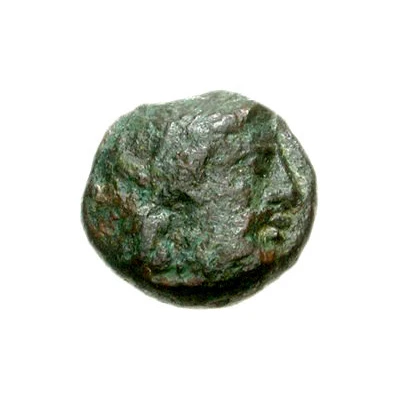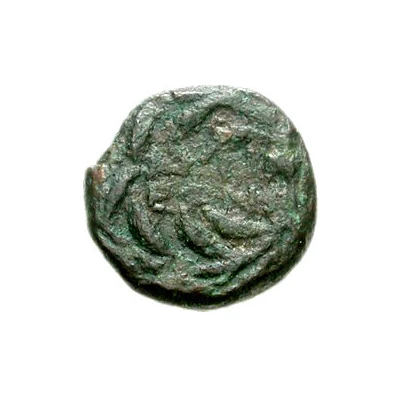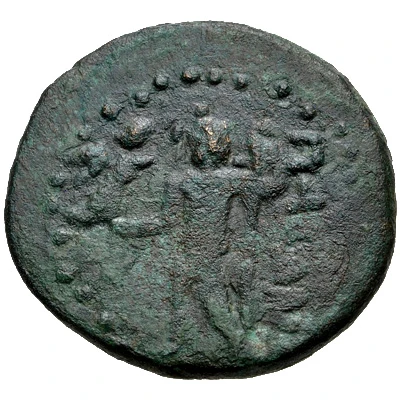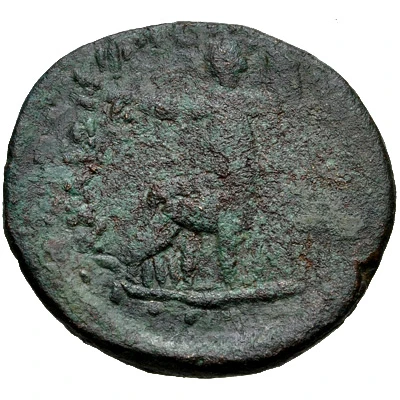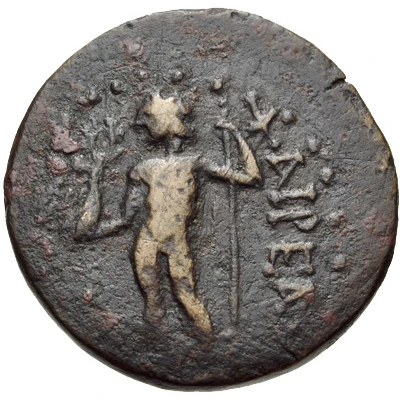
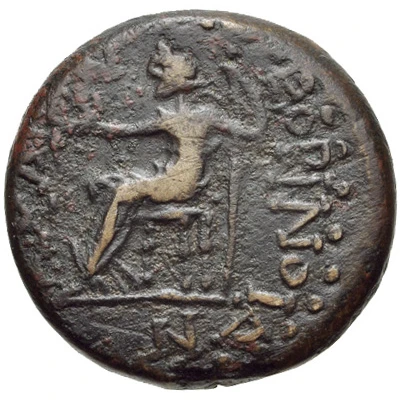

© Classical Numismatic Group, Inc.
Tetrachalkon Corinth 191 BC - 146 BC
| Bronze | 5.38 g | 20.0 mm |
| Issuer | Achaean League (Achaia) |
|---|---|
| Period | Second Achaean League (280 BC - 146 BC) |
| Type | Standard circulation coin |
| Years | 191 BC - 146 BC |
| Value | 4 Chalkoi (1⁄12) |
| Currency | Drachm |
| Composition | Bronze |
| Weight | 5.38 g |
| Diameter | 20.0 mm |
| Shape | Round (irregular) |
| Technique | Hammered |
| Orientation | Variable alignment ↺ |
| Demonetized | Yes |
| Updated | 2024-10-09 |
| Numista | N#153375 |
|---|---|
| Rarity index | 95% |
Reverse
Female figure (Achaia) seated left, holding wreath and scepter
Script: Greek
Lettering: ΚΟΡΙΝΘΙΩΝ
Comment
Warren, Bronze 213.
Interesting fact
The Tetrachalkon coin was used as a form of currency in the Achaean League, a confederation of cities in ancient Greece, during the 2nd century BC. The coin's name, Tetrachalkon, means "four chalkoi" in Greek, which refers to the four small bronze pieces that were used as change in ancient Greece. The Tetrachalkon coin was equivalent to four chalkoi and was used for small transactions. It was made of bronze and weighed around 5.38 grams. Despite its small size and value, the Tetrachalkon coin played an important role in the economy of the Achaean League and was used widely in trade and commerce.
